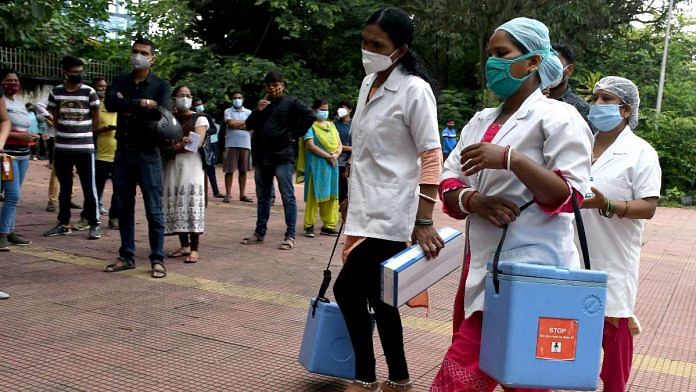When will COVID-19 be over? It’s the question being asked by everyone from parents of young children to public health officials, economists to entrepreneurs the world over.
The global economy is expected to grow by 5.6% in 2021, the fastest post-recession pace in 80 years according to data from the World Bank’s Global Economic Prospects report. And while that recovery is expected to be uneven, the twice-yearly study suggests that developing economies will grow by 6% this year.
That figure is based on higher demand and elevated prices for commodities, many of which are produced by developing economies.
But the single greatest challenge remains COVID-19 itself.
Threat to recovery
Optimism over economic recovery is tempered by concerns about a resurgence of cases and the global inequities over access to vaccines.
An animated chart issued by the World Bank illustrates the problem clearly. The analysis revises the projected growth figure downwards (by 0.2 percentage points) for countries with below-median vaccination rates and upwards (by 0.8pp) for those with above-median vaccination rates.
? Emerging market & developing economies are forecast to expand 6% this year, supported by higher demand and elevated commodity prices. However, the recovery is being held back by a resurgence of COVID-19 cases + lagging vaccination progress. Learn more: https://t.co/JQfDg6aEMf pic.twitter.com/epVLZ2Lh37
— World Bank (@WorldBank) August 2, 2021
Also read: Johnson & Johnson seeks nod to conduct vaccine trails for 12-17 age group in India
Vaccine inequity
The gulf in vaccine distribution between rich and poor nations is breathtaking and self-defeating.
The vaccination rate among rich countries is just over 51% according to the United Nations Development Programme (UNDP). It’s about 1.4% for low-income nations. The figure for the Democratic Republic of the Congo (population 89m) is less than 0.1% – or fewer than 1 in 1000 people.
According to the Vaccine Equity Dashboard, a tool developed in conjunction with United Nations (UN) agencies and the University of Oxford, growth rates in poorer countries – where many health workers are still yet to be vaccinated – may not get back to pre-pandemic levels until 2024.
If low-income countries had the same vaccination rate as high-income countries, it says, they could add $38 billion to their GDP for 2021.
The dashboard also reports that on average the level of investment required to vaccinate 70% of the population is 0.8% of health budgets in rich countries compared to 56.6% in low-income countries.
Global solutions
So what can be done to address the challenge? The focus has been on speeding up vaccine distribution to developing countries.
The global programme COVAX – conceived to give the whole world fair access to COVID-19 vaccines – has so far delivered more than 150 million vaccine doses around the world, with a target of making 2 billion available by the end of 2021. However, in June it warned that short-term supply concerns remain, particularly throughout July and August.
Alongside, the World Bank says developing countries could take action to boost growth. It urges measures to reduce trade costs – almost 50% higher in developing compared to advanced economies – and investments in green infrastructure and climate resilience.
The report warns of the possibility of a lingering pandemic contributing to a downside scenario of a “faltering” global recovery similar to that which followed the global financial crisis of 2007-8. As the oft-repeated mantra goes: no one is safe, unless everyone is safe.
Jatinder Sidhu is a writer, Formative Content
This article was previously published in the World Economic Forum.
Also read: AstraZeneca antibody cocktail prevents Covid in high-risk groups, study finds



